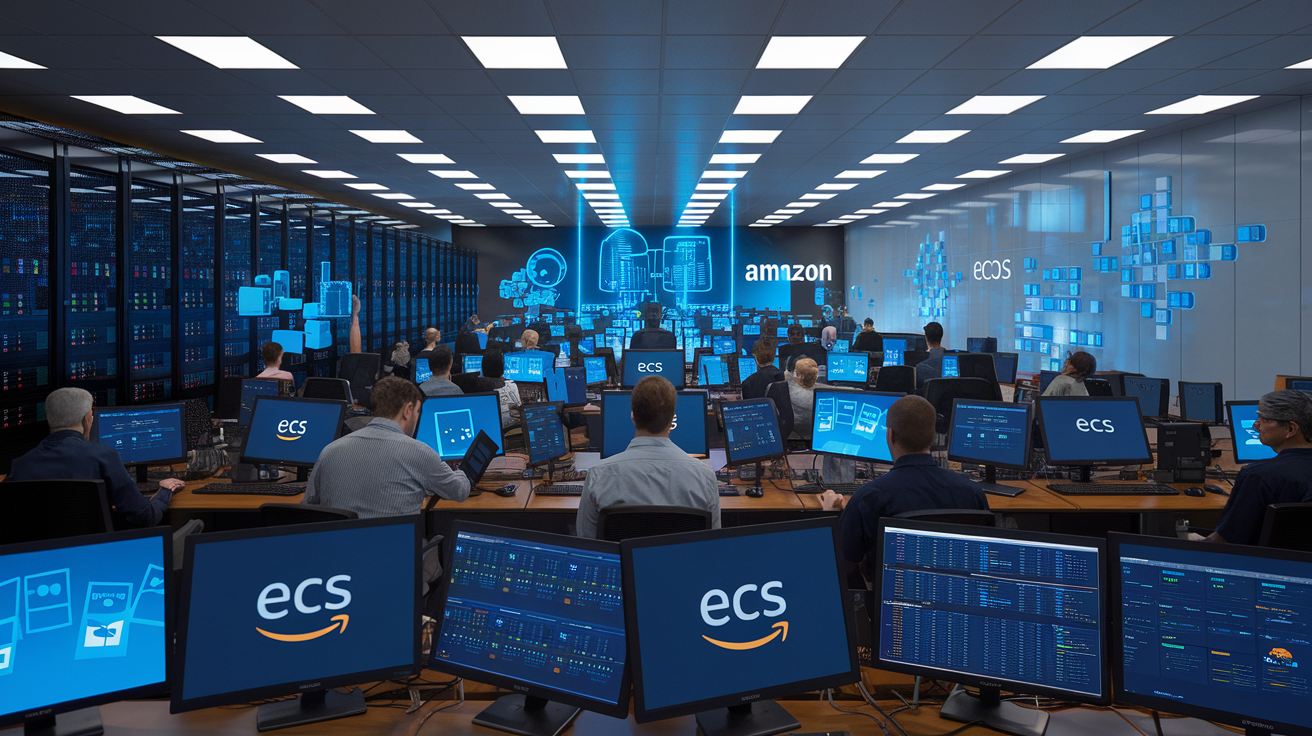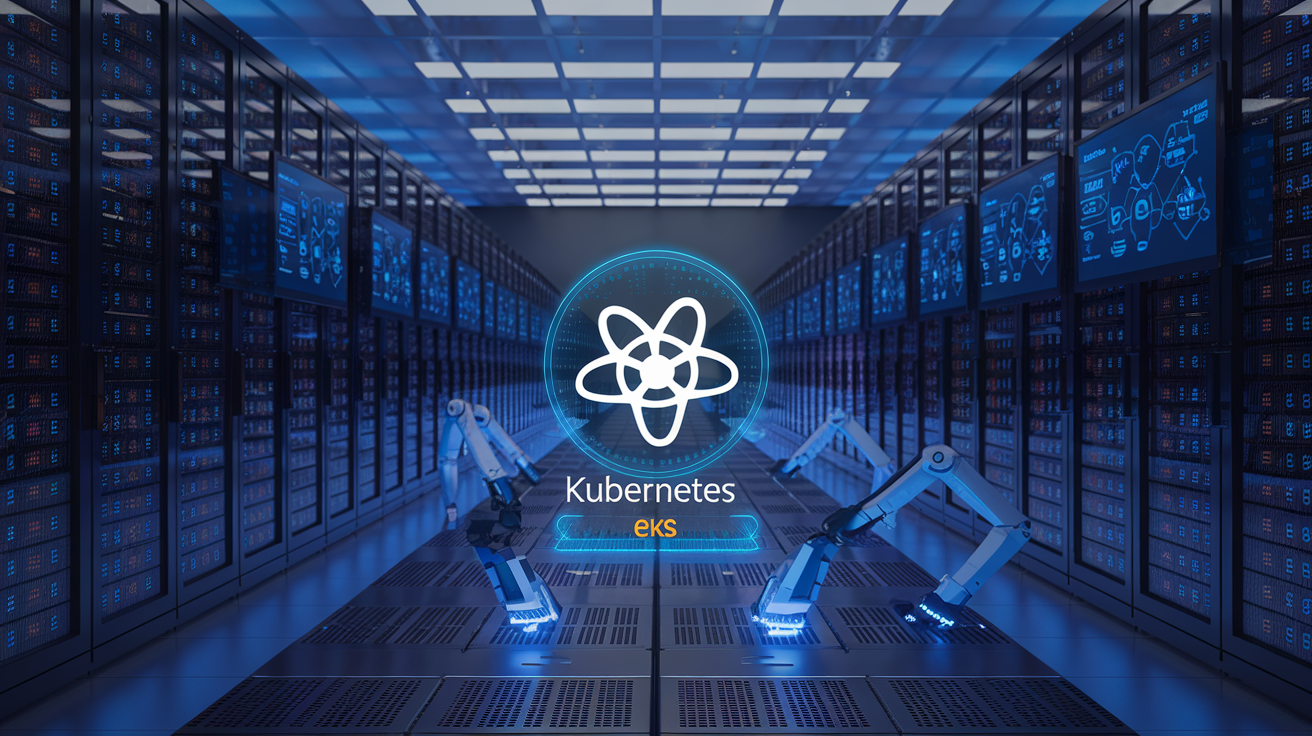Are you feeling overwhelmed by the vast array of AWS compute services? 🤯 You’re not alone! Many beginners find themselves lost in a sea of acronyms and technical jargon when first exploring Amazon Web Services. But fear not, because we’re about to embark on a journey that will demystify the world of AWS compute services and set you on the path to cloud computing success.
From the versatile Amazon EC2 to the cutting-edge AWS Lambda, and from container orchestration with Amazon ECS to the power of Kubernetes with Amazon EKS, this guide will be your compass in navigating the exciting landscape of AWS compute options. We’ll even explore the innovative AWS Fargate, which brings the best of both worlds with serverless containers.
Get ready to unlock the potential of cloud computing as we dive into the essential AWS compute services, their unique features, and how to choose the right one for your projects. Whether you’re a developer, system administrator, or cloud enthusiast, this beginner’s guide will equip you with the knowledge to leverage AWS compute services and take your applications to new heights. Let’s begin our exploration of AWS compute services and discover how they can revolutionize your cloud journey! 🚀
Understanding AWS Compute Services

What is AWS Compute?
AWS Compute refers to the cloud computing services provided by Amazon Web Services that allow users to run applications and process data without managing the underlying infrastructure. These services offer scalable, flexible, and cost-effective solutions for various computing needs.
Key benefits of AWS Compute services
AWS Compute services offer numerous advantages for businesses and developers:
- Scalability
- Cost-effectiveness
- Flexibility
- High availability
- Security
| Benefit | Description |
|---|---|
| Scalability | Easily adjust resources based on demand |
| Cost-effectiveness | Pay only for the resources you use |
| Flexibility | Choose from various compute options |
| High availability | Redundant infrastructure for minimal downtime |
| Security | Built-in security features and compliance certifications |
Overview of EC2, Lambda, Fargate, ECS, and EKS
AWS offers a range of compute services to cater to different needs:
- Amazon EC2 (Elastic Compute Cloud): Virtual servers in the cloud
- AWS Lambda: Serverless compute service for running code without provisioning servers
- Amazon ECS (Elastic Container Service): Fully managed container orchestration service
- AWS Fargate: Serverless compute engine for containers
- Amazon EKS (Elastic Kubernetes Service): Managed Kubernetes service
Each service has its unique features and use cases, allowing users to choose the most suitable option for their specific requirements. Now that we have a basic understanding of AWS Compute services, let’s dive deeper into Amazon EC2, the foundation of cloud computing.
Amazon EC2: The Foundation of Cloud Computing

EC2 instance types and use cases
EC2 offers a wide variety of instance types optimized for different use cases. Here’s a breakdown of the main categories:
- General Purpose: Balanced compute, memory, and networking resources
- Compute Optimized: High-performance processors for compute-intensive workloads
- Memory Optimized: Fast performance for workloads processing large datasets in memory
- Storage Optimized: High, sequential read/write access to large datasets on local storage
- Accelerated Computing: Hardware accelerators or co-processors for specific functions
| Instance Type | Use Case |
|---|---|
| t3.micro | Low-traffic websites, small applications |
| c5.large | Batch processing, high-performance computing |
| r5.xlarge | In-memory databases, real-time big data analytics |
| i3.2xlarge | NoSQL databases, data warehousing |
| g4dn.xlarge | Machine learning, video encoding |
Launching your first EC2 instance
Follow these steps to launch your first EC2 instance:
- Sign in to the AWS Management Console
- Navigate to the EC2 dashboard
- Click “Launch Instance”
- Choose an Amazon Machine Image (AMI)
- Select an instance type
- Configure instance details
- Add storage
- Add tags (optional)
- Configure security group
- Review and launch
EC2 pricing models and cost optimization
EC2 offers flexible pricing options to suit various needs:
- On-Demand: Pay by the second with no long-term commitments
- Reserved Instances: Up to 72% discount for 1 or 3-year terms
- Spot Instances: Up to 90% discount for flexible start and end times
- Savings Plans: Commit to consistent usage for 1 or 3 years
To optimize costs:
- Right-size instances based on actual usage
- Use Auto Scaling to adjust capacity
- Leverage Spot Instances for non-critical workloads
- Implement proper tagging for cost allocation
Best practices for EC2 security
Ensure your EC2 instances are secure by following these best practices:
- Use Security Groups to control inbound and outbound traffic
- Implement the principle of least privilege for IAM roles
- Regularly patch and update your instances
- Enable and configure CloudTrail for auditing
- Use encryption for data at rest and in transit
- Implement Multi-Factor Authentication (MFA) for root and IAM users
- Regularly back up your instances using Amazon EBS snapshots
Now that we’ve covered EC2, let’s explore serverless computing with AWS Lambda, which offers a different approach to running your code in the cloud.
Serverless Computing with AWS Lambda

Introduction to serverless architecture
Serverless architecture revolutionizes cloud computing by allowing developers to focus solely on writing code without worrying about infrastructure management. AWS Lambda, a cornerstone of this paradigm, enables you to run code without provisioning or managing servers.
Key benefits of serverless architecture include:
- Automatic scaling
- Pay-per-use pricing
- Reduced operational overhead
- Faster time to market
| Feature | Traditional Architecture | Serverless Architecture |
|---|---|---|
| Scaling | Manual | Automatic |
| Pricing | Fixed costs | Pay-per-use |
| Management | Full server management | Zero server management |
| Deployment | Complex | Simplified |
Creating and deploying Lambda functions
To create and deploy a Lambda function:
- Write your function code in a supported language (e.g., Python, Node.js, Java)
- Configure function settings (memory, timeout, IAM role)
- Deploy the function using AWS Management Console, CLI, or SDK
- Test the function using sample events
Lambda triggers and integrations
Lambda functions can be triggered by various AWS services, enabling seamless integration within your cloud ecosystem. Common triggers include:
- API Gateway for RESTful APIs
- S3 for file processing
- DynamoDB for database events
- CloudWatch for scheduled tasks
Monitoring and troubleshooting Lambda functions
Effective monitoring and troubleshooting are crucial for maintaining healthy Lambda functions. AWS provides several tools to help:
- CloudWatch Logs for function output and errors
- CloudWatch Metrics for performance monitoring
- X-Ray for distributed tracing and debugging
By leveraging these tools, you can ensure optimal performance and quickly resolve any issues that arise in your serverless applications.
Container Orchestration with Amazon ECS

Understanding containerization and Docker
Containerization has revolutionized the way applications are deployed and managed. At its core, containerization allows developers to package an application with all its dependencies into a standardized unit called a container. Docker, the most popular containerization platform, has become synonymous with this technology.
Key benefits of containerization:
- Portability
- Consistency
- Efficiency
- Scalability
- Isolation
| Feature | Traditional VMs | Containers |
|---|---|---|
| Startup time | Minutes | Seconds |
| Resource usage | High | Low |
| Isolation | Complete | Process-level |
| OS | Full OS | Shares host OS |
| Size | GBs | MBs |
Setting up your first ECS cluster
Amazon ECS (Elastic Container Service) simplifies container management in the AWS cloud. To set up your first ECS cluster:
- Navigate to the ECS console
- Choose “Create Cluster”
- Select cluster template
- Configure cluster settings
- Review and create
Task definitions and service management
Task definitions in ECS are JSON files that describe one or more containers that form your application. They specify crucial details such as:
- Docker image to use
- CPU and memory requirements
- Port mappings
- Environment variables
Services in ECS manage the deployment of tasks, ensuring that the specified number of tasks are running and replacing any that fail.
ECS scaling and load balancing
ECS provides robust scaling capabilities to handle varying workloads. You can configure auto-scaling based on metrics like CPU utilization or memory usage. Load balancing is achieved through integration with Elastic Load Balancing (ELB), distributing traffic across your containers for improved performance and availability.
Now that we’ve covered the basics of Amazon ECS, let’s explore how AWS Fargate takes containerization to the next level with its serverless approach.
Serverless Containers with AWS Fargate

Fargate vs. EC2 launch type
AWS Fargate offers a serverless approach to container deployment, contrasting with the EC2 launch type. Let’s compare these options:
| Feature | Fargate | EC2 Launch Type |
|---|---|---|
| Infrastructure Management | Fully managed by AWS | User-managed EC2 instances |
| Scaling | Automatic, per-task | Manual or auto-scaling groups |
| Pricing | Pay-per-task | Pay for entire EC2 instance |
| Isolation | Task-level isolation | Instance-level isolation |
| Flexibility | Limited customization | Full control over instances |
Fargate simplifies container management, while EC2 provides more control and flexibility.
Deploying containers on Fargate
Deploying containers on Fargate involves these steps:
- Create a task definition
- Configure networking
- Set up an ECS cluster
- Launch tasks or services
Fargate automatically handles the underlying infrastructure, allowing you to focus on your application logic.
Fargate pricing and cost management
Fargate uses a pay-per-task model, charging for vCPU and memory resources used by your containers. To optimize costs:
- Right-size your tasks
- Use Spot capacity when possible
- Implement auto-scaling
- Monitor usage with AWS Cost Explorer
Now that we’ve covered Fargate, let’s explore how Kubernetes is simplified with Amazon EKS.
Kubernetes Made Easy with Amazon EKS

Introduction to Kubernetes
Kubernetes, often abbreviated as K8s, is an open-source container orchestration platform that automates the deployment, scaling, and management of containerized applications. It provides a robust framework for running distributed systems efficiently and reliably.
Key features of Kubernetes include:
- Automated rollouts and rollbacks
- Self-healing capabilities
- Horizontal scaling
- Service discovery and load balancing
- Secret and configuration management
| Component | Description |
|---|---|
| Pods | Smallest deployable units in Kubernetes |
| Nodes | Worker machines in a Kubernetes cluster |
| Control Plane | Manages the cluster state and worker nodes |
| Services | Expose applications running on pods |
Creating an EKS cluster
Amazon EKS simplifies the process of creating and managing Kubernetes clusters on AWS. To create an EKS cluster:
- Set up an IAM role for EKS
- Create a VPC and subnets
- Use the AWS Management Console or CLI to create the cluster
- Configure kubectl to interact with your cluster
Deploying applications on EKS
Once your EKS cluster is up and running, you can deploy applications using Kubernetes manifests or Helm charts. Here’s a basic workflow:
- Create a Kubernetes deployment file
- Apply the deployment using kubectl
- Expose the application using a Kubernetes service
- Monitor the deployment status
EKS security and networking
EKS integrates seamlessly with AWS security features and provides robust networking capabilities:
- IAM integration for fine-grained access control
- Network policies for controlling pod-to-pod communication
- AWS VPC CNI plugin for native VPC networking
- Support for private clusters using AWS PrivateLink
By leveraging these features, you can create secure and scalable Kubernetes environments on AWS with ease.
Choosing the Right AWS Compute Service

Comparing EC2, Lambda, Fargate, ECS, and EKS
When selecting the right AWS compute service for your needs, it’s essential to understand the key differences between EC2, Lambda, Fargate, ECS, and EKS. Let’s compare these services based on their characteristics and use cases:
| Service | Type | Scalability | Management | Use Case |
|---|---|---|---|---|
| EC2 | VM-based | Manual/Auto | Full control | Traditional apps |
| Lambda | Serverless | Automatic | Minimal | Event-driven, short-running tasks |
| Fargate | Serverless containers | Automatic | Minimal | Long-running containerized apps |
| ECS | Container orchestration | Manual/Auto | Moderate | Microservices, batch processing |
| EKS | Managed Kubernetes | Manual/Auto | Moderate | Complex, large-scale container deployments |
Use case scenarios for each service
- EC2: Ideal for applications requiring full control over the infrastructure, such as legacy applications or those with specific OS requirements.
- Lambda: Perfect for event-driven architectures, API backends, and data processing tasks that run for short durations.
- Fargate: Suitable for containerized applications that need to run continuously without managing the underlying infrastructure.
- ECS: Great for microservices architectures, batch processing jobs, and applications that benefit from container orchestration.
- EKS: Best for organizations already using Kubernetes or requiring advanced container orchestration features for large-scale deployments.
Hybrid and multi-service architectures
In many cases, a combination of these services can provide the most efficient and cost-effective solution. For example:
- Using EC2 for the main application and Lambda for background tasks
- Implementing ECS with a mix of EC2 and Fargate launch types
- Utilizing EKS for complex microservices and Lambda for serverless API endpoints
By leveraging the strengths of each service, you can create robust and scalable architectures that meet your specific requirements. Consider factors such as performance, cost, scalability, and management overhead when designing your hybrid or multi-service solution.

AWS Compute services offer a diverse range of options to meet your application’s needs. From the versatile Amazon EC2 for traditional virtualization to serverless solutions like AWS Lambda and container orchestration platforms such as Amazon ECS, EKS, and Fargate, there’s a compute service tailored for every use case. Understanding these services and their unique strengths is crucial for optimizing your cloud infrastructure and maximizing efficiency.
As you embark on your AWS journey, take the time to evaluate your application requirements and explore each compute service in depth. Whether you’re looking for fine-grained control, seamless scalability, or simplified management, AWS has a solution to power your digital transformation. Remember, the key to success in the cloud lies in choosing the right tool for the job and leveraging AWS’s robust ecosystem to its fullest potential.




















